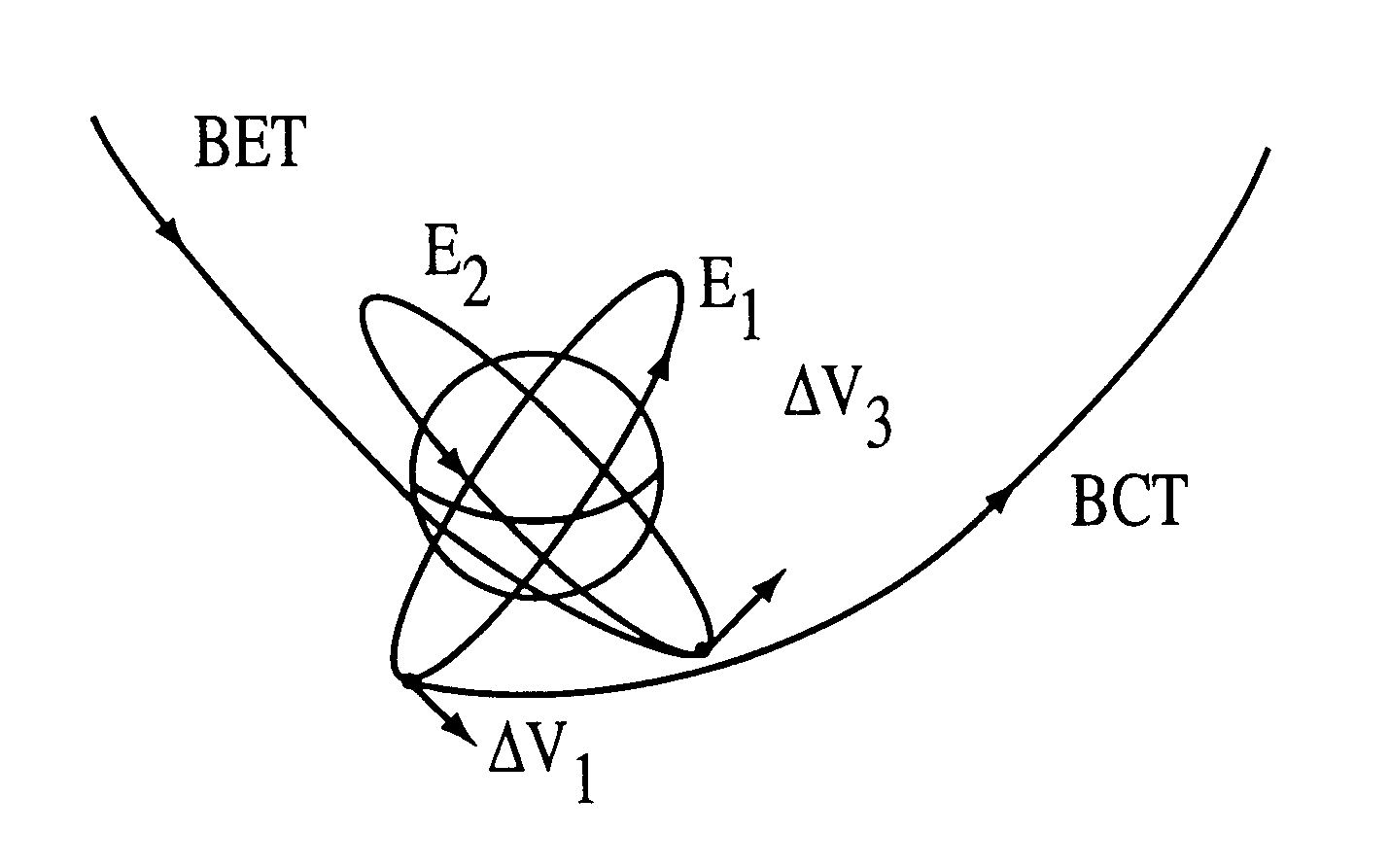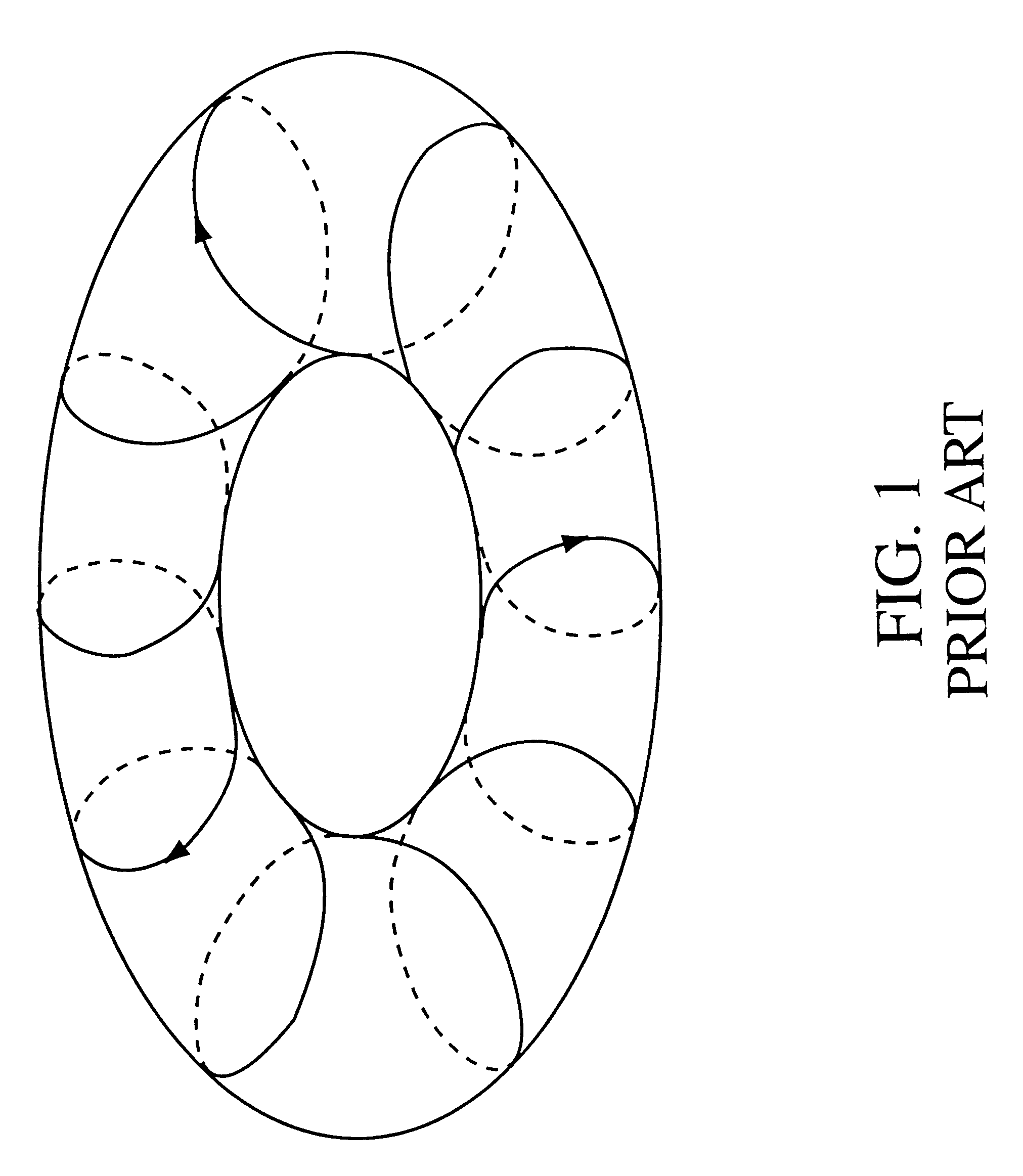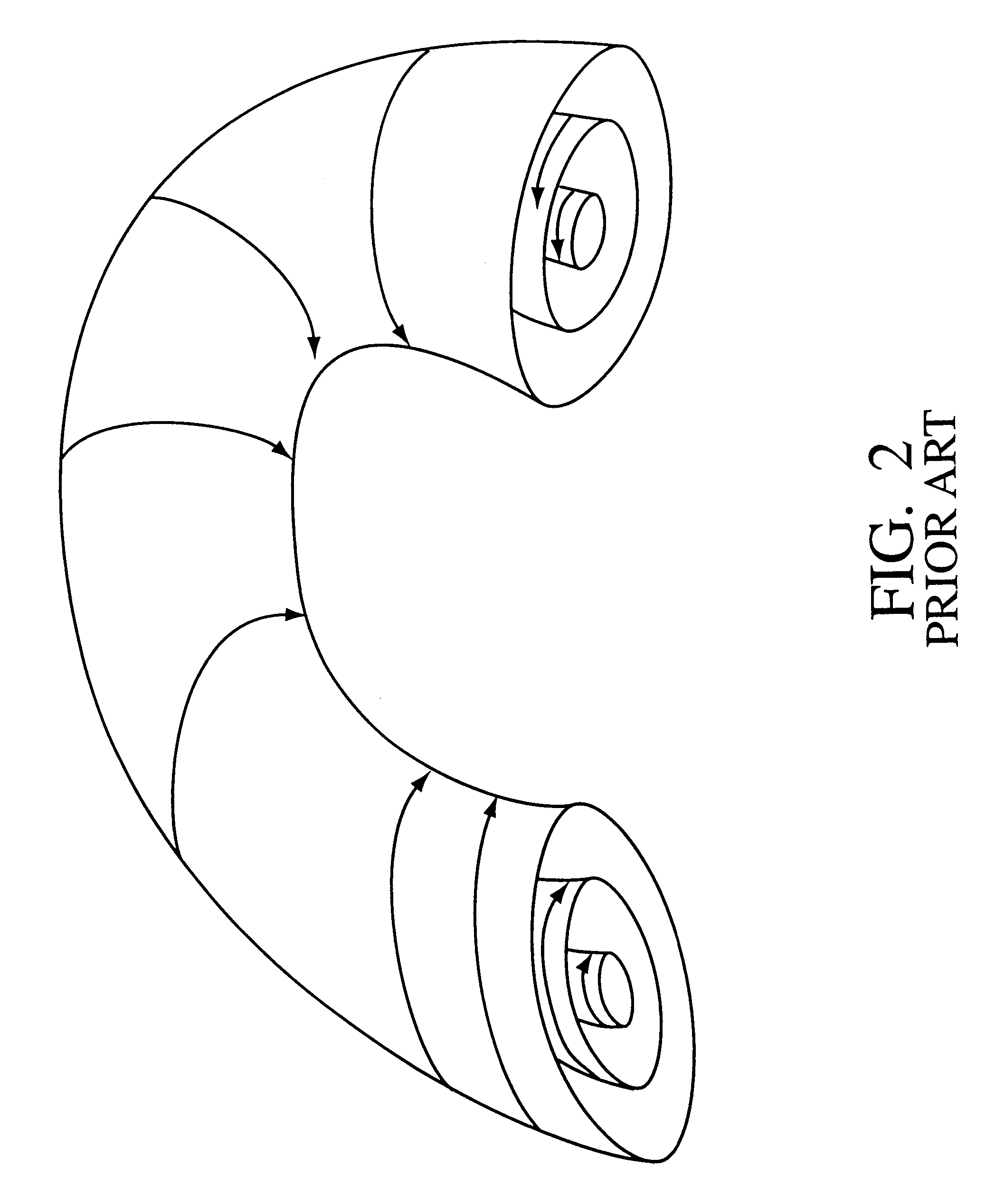Low energy method for changing the inclinations of orbiting satellites using weak stability boundaries and a computer process for implementing same
a low energy and satellite technology, applied in the field of space travel, can solve the problems of considerable consumption of propellant, long range behavior of these systems cannot be predicted, and nevertheless does constitute a drawback, so as to reduce the propellant requirements of lunar missions, low propellant requirements, and low propellant requirements
- Summary
- Abstract
- Description
- Claims
- Application Information
AI Technical Summary
Benefits of technology
Problems solved by technology
Method used
Image
Examples
Embodiment Construction
When a rocket travels from the earth to the moon on a classical direct route taking only three days called a Hohmann transfer, it must fire its engines in order to slow down to achieve lunar orbit. Otherwise, the rocket will overfly the moon at about 1 km / s.
A typical lunar mission comprises the following steps. Initially, a spacecraft is launched from earth or low earth orbit with sufficient impulse per unit mass, or change in velocity, to place the spacecraft into an earth-to-moon orbit. Generally, this orbit is a substantially elliptic earth-relative orbit having an apogee selected to nearly match the radius of the moon's earth-relative orbit.
As the spacecraft approaches the moon, a change in velocity is provided to transfer the spacecraft from the earth-to-moon orbit to a moon-relative orbit. An additional change in velocity may then be provided to transfer the spacecraft from the moon-relative orbit to the moon's surface if a moon landing is planned. When a return trip to the ea...
PUM
 Login to View More
Login to View More Abstract
Description
Claims
Application Information
 Login to View More
Login to View More - R&D
- Intellectual Property
- Life Sciences
- Materials
- Tech Scout
- Unparalleled Data Quality
- Higher Quality Content
- 60% Fewer Hallucinations
Browse by: Latest US Patents, China's latest patents, Technical Efficacy Thesaurus, Application Domain, Technology Topic, Popular Technical Reports.
© 2025 PatSnap. All rights reserved.Legal|Privacy policy|Modern Slavery Act Transparency Statement|Sitemap|About US| Contact US: help@patsnap.com



